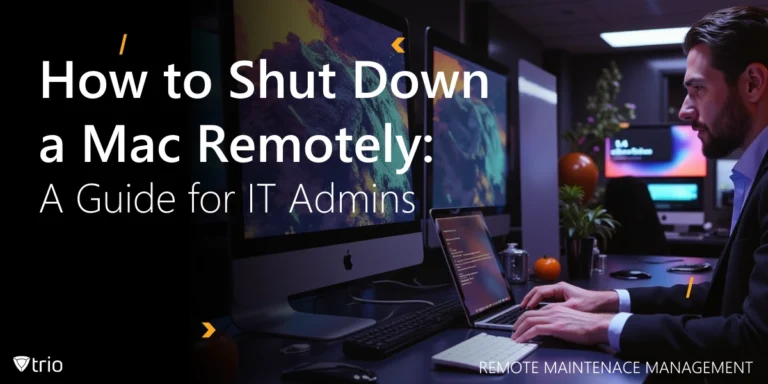According to IBM’s report, the average cost of a data breach was over four million dollars in 2023. Network security policies provide a structured framework for protecting the organization’s network infrastructure and preventing such data breaches. They outline the measures and procedures necessary to prevent unauthorized access, detect malicious activities, and respond effectively to security incidents. By establishing clear guidelines and protocols, these policies help mitigate risks and enhance the organization’s overall security posture.
1. Define Clear Objectives and Scope
When creating a network security policy template, it is crucial to start with clearly defined objectives and scope. The objectives should outline the primary goals of the policy, such as protecting sensitive data, ensuring regulatory compliance, and maintaining network integrity. By establishing these goals upfront, you provide a clear direction for the entire policy, ensuring that all measures and controls implemented align with these overarching aims.
The scope of the network security policy should specify the network components and users to which the policy applies. This includes identifying all hardware, software, and data assets that need protection, as well as detailing which employees, contractors, and third-party vendors are subject to the policy. Defining the scope helps prevent any ambiguities and ensures comprehensive coverage, thereby reducing potential vulnerabilities that could be exploited by cyber threats.
2. Use Standardized Terminology
Utilizing standardized terminology in your network security policy template is essential for clarity and consistency. Definitions for key terms such as “firewall,” “encryption,” “intrusion detection system (IDS),” and “virtual private network (VPN)” should be provided at the beginning of the document. This ensures that everyone who reads the policy, from IT professionals to non-technical staff, has a common understanding of the terms used.
Standardized terminology also facilitates better communication and enforcement of the policy. When all stakeholders have a clear and shared understanding of the security terms and concepts, it becomes easier to implement and adhere to the policy guidelines. This reduces the likelihood of misinterpretation and ensures that security measures are applied consistently across the organization.
3. Incorporate Comprehensive Access Controls
Access controls are a cornerstone of network security management, and your template should detail robust mechanisms for user authentication and authorization. Implementing multi-factor authentication (MFA) is a key measure that significantly enhances security by requiring users to provide multiple forms of verification before accessing the network. Additionally, the template should outline procedures for regularly updating and enforcing strong password policies.
Authorization processes should follow the principle of least privilege, granting users the minimum level of access necessary to perform their job functions. The template should include guidelines for regularly reviewing user access rights and adjusting them as needed to prevent unauthorized access. By incorporating comprehensive access controls, you can protect your network from internal and external threats and ensure that sensitive information remains secure.
4. Detail Monitoring and Incident Response Procedures
An effective network security template must include detailed procedures for monitoring network activity and responding to incidents. This involves deploying tools such as intrusion detection systems (IDS) and setting up logging practices to maintain records of all network activities. Regular audits and vulnerability assessments should also be part of the monitoring procedures to identify and address potential security weaknesses.
Incident response procedures should be clearly defined, outlining the steps to be taken when a security breach occurs. This includes immediate actions to contain the incident, communication protocols for notifying relevant personnel, and a post-incident review process to analyze the root cause and improve future responses. By detailing these procedures in the template, you ensure that the organization is prepared to quickly and effectively handle security incidents, minimizing potential damage and recovery time.
5.Ensure Ongoing Policy Review and Updates
A static network security policy can quickly become outdated in the face of evolving cyber threats and technological advancements. Therefore, your template should include a section on the frequency and procedures for reviewing and updating the network security architecture. Regular reviews, at least annually, are essential to ensure the security architecture framework remains relevant and effective.
The template should outline a process for incorporating feedback from various stakeholders, including IT staff, security experts, and regulatory compliance officers. Updates should reflect changes in technology, emerging threats, and new regulatory requirements. By ensuring ongoing review and updates, you maintain a dynamic and resilient network security posture that can adapt to new challenges and protect your organization’s assets effectively.
Download Network Security Policy Template
In conclusion, network security policies are essential for protecting an organization’s network infrastructure and information assets. These policies provide a structured framework for preventing, detecting, and responding to security incidents, ensuring compliance with legal and regulatory requirements, and maintaining business continuity. By implementing robust network security policies and regularly reviewing and updating them, organizations can mitigate risks and enhance their overall security posture. You can use this free network security policy template we have created.
A great way to keep an eye out for network security policy changes and keeping devices updated is to use a Mobile Device Management (MDM) solution. We recommend you use Trio, an excellent MDM solution with a free trial that you can check out to see all of its features in full effect.
Get Ahead of the Curve
Every organization today needs a solution to automate time-consuming tasks and strengthen security.
Without the right tools, manual processes drain resources and leave gaps in protection. Trio MDM is designed to solve this problem, automating key tasks, boosting security, and ensuring compliance with ease.
Don't let inefficiencies hold you back. Learn how Trio MDM can revolutionize your IT operations or request a free trial today!




